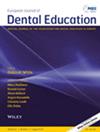Psychomotor Skills of Domestic and Internationally Trained Dental Students in Pre-Clinical Dental Education
Abstract
Introduction
Evidence on the pre-clinical and clinical performance of internationally trained dental students compared with domestic students and competency standards is limited. The aim of this study was to compare, relatively and normatively, the psychomotor skills of domestic and internationally trained dental students who participated in the same pre-clinical, 9-week, fixed prosthodontics course.
Materials and Methods
Course grades were collected for a total of 224 domestic and 66 internationally trained dental students between 2014 and 2020. Descriptive statistics, t-tests and chi-square tests were used to describe and compare the two groups.
Results
At the start of the course, slightly developed or underdeveloped psychomotor skills were observed in 47.8% of domestic students and 34.8% of internationally trained dental students; however, at the end of the course, 78.1% of domestic students and 69.7% of internationally trained dental students had developed or very developed psychomotor skills. Internationally trained dental students had significantly higher psychomotor skills at the start (p = 0.009), but not at the end (p = 0.285) of the course compared to their domestic counterparts. The improvement in psychomotor skills observed in domestic students was significantly greater than that of internationally trained dental students (p = 0.003). At the start of the course, 85.7% of domestic students and 75.5% of internationally trained dental students exhibited training needs. Training needs decreased at the end of the course in both groups but remained sizable.
Conclusions
While internationally trained dental students outperformed domestic students at baseline, no significant differences were observed between the two groups by the end of the course. Both groups exhibited training needs at both time points, underscoring the necessity for continued scaffolded support.

 求助内容:
求助内容: 应助结果提醒方式:
应助结果提醒方式:


